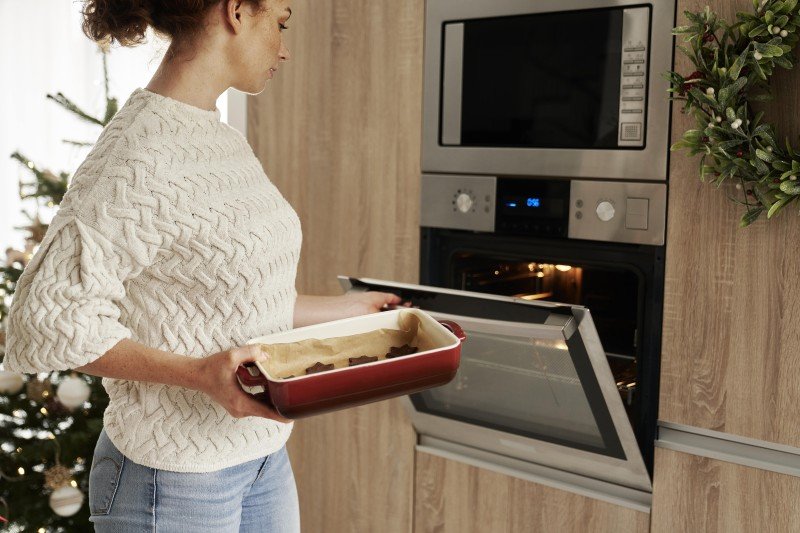7 Little Changes That'll Make A Big Difference In Your Oven Hobs

The Essential Guide to Oven Hobs: Selecting the Right One for Your Kitchen
When it pertains to home cooking, few home appliances are as vital as the oven hob. This flexible piece of equipment is vital for a range of cooking techniques-- boiling, frying, simmering, and sautéing. Offered the myriad of choices readily available on the market, picking the perfect oven hob for one's kitchen can be daunting. This short article intends to provide a thorough look at oven hobs, discussing their types, functionalities, advantages, downsides, and key factors to consider when purchasing one.
Comprehending Oven Hobs
Oven hobs, commonly known as cooktops, are flat cooking platforms that feature burners or heating elements. They can be integrated with an oven or stand-alone. Buy Oven Online of an oven hob can significantly affect cooking performance and convenience.
Kinds Of Oven Hobs
Oven hobs are available in different types, each with special functions. Below are the most common types offered:
| Type | Description | Advantages | Disadvantages |
|---|---|---|---|
| Gas Hobs | Uses gas or gas | Immediate heat and exact temperature level control; works well with all cookware | Requires a gas connection; less energy-efficient than electric |
| Electric Hobs | Use electric coils or convected heat | Easy to clean; constant heat circulation | Slower to heat up; can be less responsive than gas |
| Induction Hobs | Utilizes magnetic fields to heat pots and pans directly | Fast cooking; energy-efficient; simple to tidy | Requires compatible cookware; usually more expensive |
| Ceramic Hobs | Flat glass-ceramic surface with radiant heat | Aesthetically pleasing; easy to tidy | Can be susceptible to scratching; slower to heat than induction |
Key Features of Oven Hobs
When choosing an oven hob, several functions need to be considered:
- Size & & Configuration: Available in different sizes, oven hobs can accommodate numerous pots and pans. Standard choices are typically 30, 36, or 48 inches wide.
- Power Output: Look for hobs with varying power levels for different cooking processes. High-powered burners are excellent for boiling, while lower-power ones can be utilized for simmering.
- Control Types: Choose between knob controls and touch controls. Knobs offer tactile feedback, while touch controls use streamlined styles and additional functionalities.
- Security Features: Options like automated shut-off, child locks, and flame failure devices are crucial for avoiding mishaps.
- Relieve of Cleaning: Choose designs with smooth surface areas or removable parts for simple maintenance.
Benefits and Disadvantages
Comprehending the benefits and drawbacks of different oven hobs can assist in making an informed choice.
Advantages
- Flexibility: Suitable for various cooking techniques, from boiling to frying.
- Speed: Many hobs heat rapidly, specifically induction models.
- Energy Efficiency: Some choices, like induction hobs, can decrease energy usage compared to traditional techniques.
Downsides
- Expense: High-end models, especially induction hobs, can be expensive.
- Installation: Gas hobs need expert installation and a gas supply, which might incur extra expenses.
- Compatibility: Not all pots and pans deals with induction hobs, demanding extra purchases.
Purchasing Considerations
When choosing an oven hob, think about the list below factors:
- Cooking Style: Assess how typically and what kind of cooking you do to identify the best hob type.
- Kitchen Layout: Measure your kitchen area to ensure the hob fits and matches other devices.
- Budget plan: Determine how much you are prepared to spend. Consider installation and the expense of any required cookware.
- Energy Source: Evaluate the availability of gas or the electrical capability of your kitchen to decide in between gas and electric options.
FAQs About Oven Hobs
Q1: What is the distinction in between a cooktop and an oven hob?A cooktop and an oven hob usually describe the very same appliance. Nevertheless,"cooktop "is a wider term that consists of both standalone hobs and integrated systems with ovens. Q2: Can I utilize any pots and pans on an induction
hob?No, induction hobs need ferrous( magnetic)pots and pans
to work. Cookware made of product like stainless steel or cast iron appropriates, while aluminum and copper without magnetic properties are not. Q3: How do I tidy my oven hob properly?Cleaning methods depend on the type of hob.
Generally, a moist fabric and moderate detergent work for glass-ceramic surfaces, while a particular hob cleaner is perfect for induction. Gas hobs require disassembling burners for extensive cleansing. Q4: Are induction hobs safe for cooking?Yes, induction hobs are typically more secure than gas hobs as they do not produce an open flame,and the surface area cools off quickly. Most models likewise feature kid safety locks. Q5: How frequently must I change my oven hob?The lifespan of an oven hob differs based on the type and use. Generally, they last around 10 to 15 years.
Routine upkeep can help extend this period. Picking the ideal oven hob for your home can significantly enhance your cooking experience. With a comprehensive understanding of the types, features, benefits, and factors to consider, anybody can make an informed choice. From the high heat of gas to the performance of induction, there is a hob fit to every cooking need. Eventually, the ideal oven hob can transform cooking from a mundane task into an art form, making it possible for culinary lovers to develop scrumptious meals with ease.

